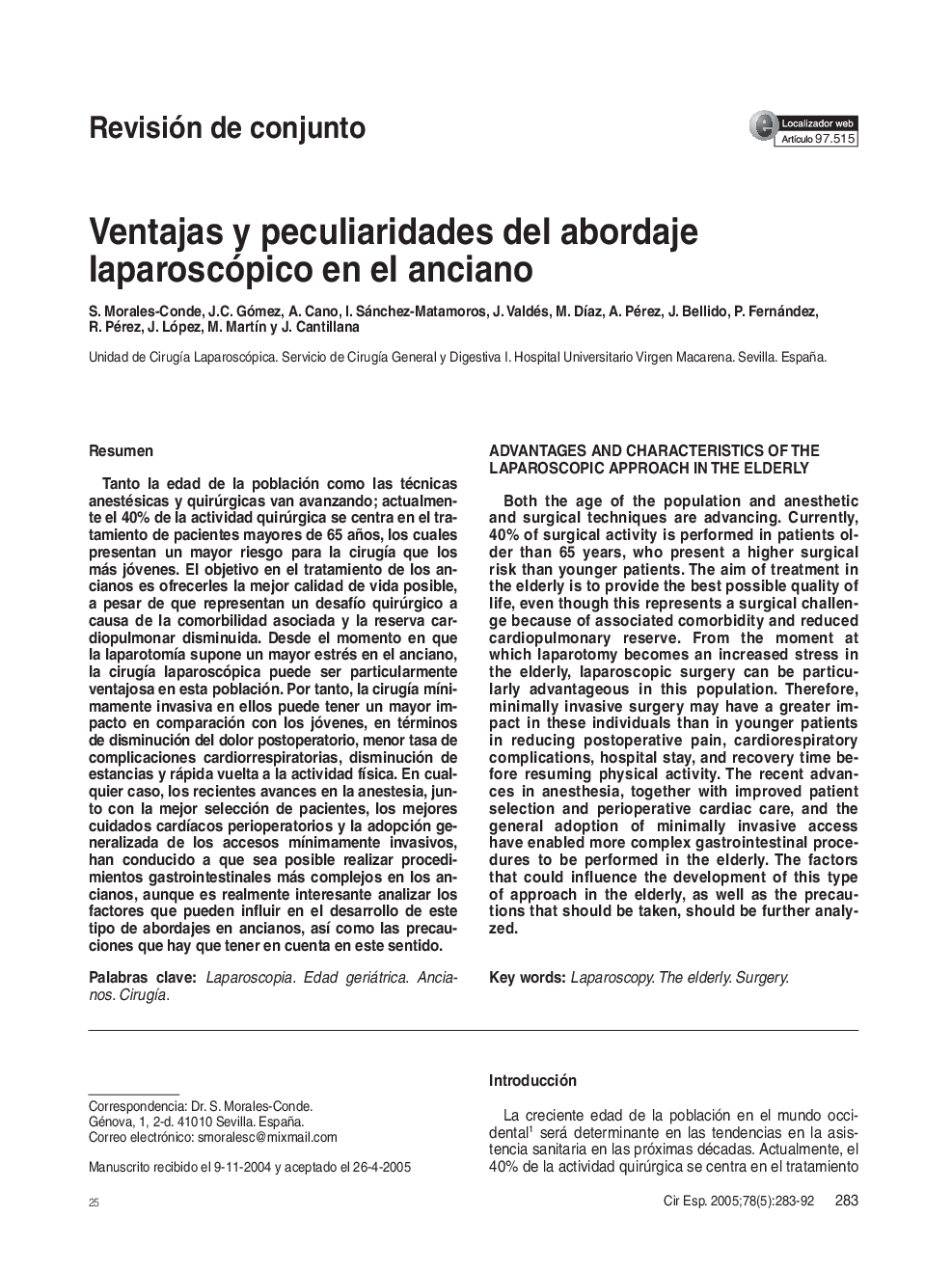| Article ID | Journal | Published Year | Pages | File Type |
|---|---|---|---|---|
| 9394475 | Cirugía Española | 2005 | 10 Pages |
Abstract
Both the age of the population and anesthetic and surgical techniques are advancing. Currently, 40% of surgical activity is performed in patients older than 65 years, who present a higher surgical risk than younger patients. The aim of treatment in the elderly is to provide the best possible quality of life, even though this represents a surgical challenge because of associated comorbidity and reduced cardiopulmonary reserve. From the moment at which laparotomy becomes an increased stress in the elderly, laparoscopic surgery can be particularly advantageous in this population. Therefore, minimally invasive surgery may have a greater impact in these individuals than in younger patients in reducing postoperative pain, cardiorespiratory complications, hospital stay, and recovery time before resuming physical activity. The recent advances in anesthesia, together with improved patient selection and perioperative cardiac care, and the general adoption of minimally invasive access have enabled more complex gastrointestinal procedures to be performed in the elderly. The factors that could influence the development of this type of approach in the elderly, as well as the precautions that should be taken, should be further analyzed.
Related Topics
Health Sciences
Medicine and Dentistry
Surgery
Authors
S. Morales-Conde, J.C. Gómez, A. Cano, I. Sánchez-Matamoros, J. Valdés, M. DÃaz, A. Pérez, J. Bellido, P. Fernández, R. Pérez, J. López, M. MartÃn, J. Cantillana,
